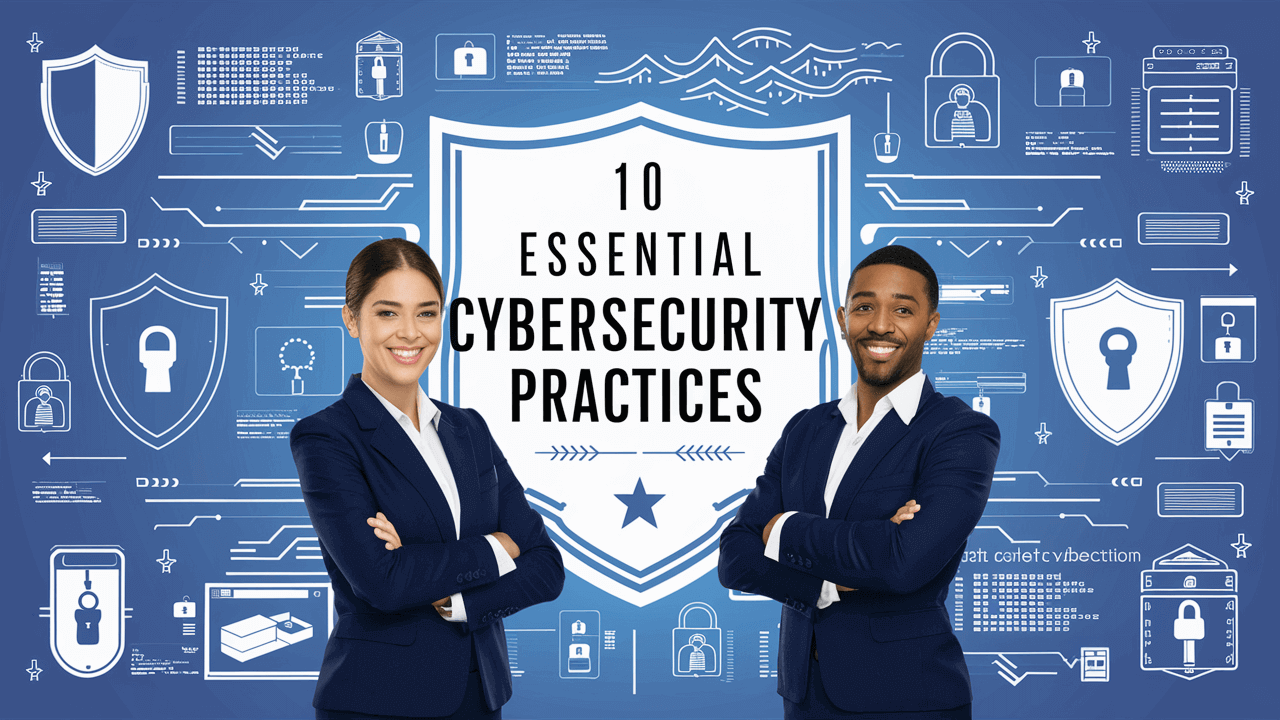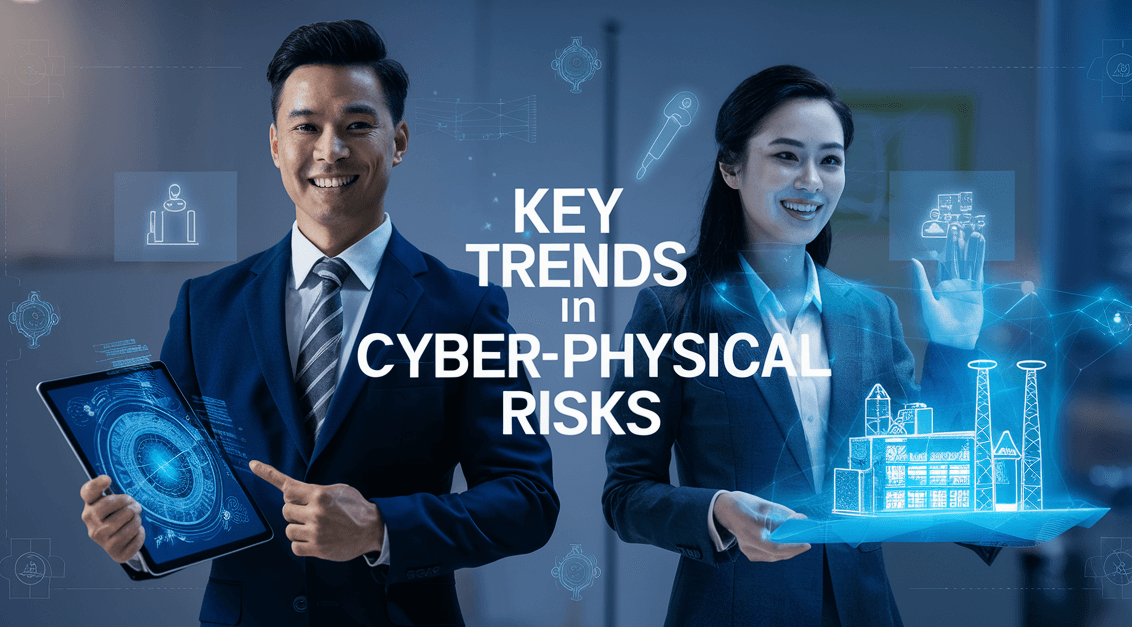If 2024 taught us anything, it’s that cyber threats evolve faster than we can roll out updates. Yet, it holds true that today’s attackers are not lone wolves in hoodies. They are organized, well-funded, and often using artificial intelligence that feels one step ahead. Definitely, the information sphere has changed with AI-generated deep-fakes to quantum-era whispers about encryption risks. However, you don’t need to reinvent the wheel to stay safe; you just need to stay consistent. Below are the 10 cybersecurity best practices for 2025 that will aid you in building resilience, shore up weak spots, and turn security into business strength.

Jump ahead to
Proven 10 Cybersecurity Best Practices for Stronger Protection
Embrace AI-driven Defense but Stay in the Driver’s Seat
Artificial Intelligence is a double-edged sword in modern security. On one side, attackers use it to craft near-perfect phishing lures, deep-fake your CEO’s voice, and automate malware campaigns. Meanwhile, on the other hand, defenders can use AI-enabled detection tools to spot anomalies, automate log analysis, triage alerts at lightning speed, etc. In fact, the trick is allowing AI to handle the heavy lifting while keeping human analysts in control. That means, think of AI as your co-pilot, not your autopilot. It is great for acceleration, but you still steer the wheel. Moreover, organizations that rush into AI without guardrails risk creating as many problems as they solve.
Zero-Trust in a Buzz Word: It’s Your New Default
Gone are the days when being “inside” the network meant being trusted. In 2025, attackers often get in through stolen credentials or compromised endpoints. That’s why the policy of Zero Trust, “the philosophy of never trust, always verify, has become non-negotiable. That implies that every request, whether from a user or a device, is validated before access is granted. Multi-factor authentication is for everyone, including granular access controls and micro-segmentation of networks, so that attackers can’t hop around freely. Yes, it can feel like locking every door of the house, but when burglars are this crafty. It’s the only way to sleep soundly at night.
Stay Quantum Aware, Prepare for Tomorrow’s Threats Today
Quantum Computing may not break encryption tomorrow, but it’s closer than many realize. Hence, once mature, the algorithms we rely on, RSA and ECC, could be cracked quickly. Smart organizations in 2025 are not waiting until the eleventh hour. On the other hand, they are:
- Inventorying cryptographic assets
- Piloting post-quantum encryption algorithms
- Building flexibility into systems to swap encryption fast.
It’s like reinforcing your house against a storm you know is coming. You would rather prepare on a sunny day than scramble when clouds roll in.
Don’t Let Your Supply Chain Be the Weak Link
Your defenses are only as strong as your partners. Hence, attackers often slip in through third-party vendors with weaker controls. Therefore, in 2025, the 10 best cybersecurity practices are to :
- Conduct vendor security assessments regularly
- Limit vendor access to essential systems only
- Continuously monitor for suspicious partner activity.
In this case, you can think of it like lending your car and handing over the keys doesn’t mean they get to drive it forever.
Deploy Continuous Exposure Management(CEM)
Traditional monthly scans are as outdated as dial-up. At present, cloud, hybrid, and mobile shift by the hour. Moreover, Continuous Exposure Management keeps an eye on the whole attack surface in real-time. It maps where misconfigurations or gaps could be exploited. In addition, the best systems not only identify flaws but also prioritize them. This shows which exposure matters most to the attackers. Put simply, it’s the difference between being overwhelmed by the noise and focusing on the one hole in the fence that leads straight to the crown jewels.
Build A Flexible Interoperable Security Mesh
With workloads scattered across multi-clouds, edge-devices, and on-prem systems, disconnected security tools create chaos. It is optimal to enter Cybersecurity Mesh Architecture ( CSMA), which is a design that weaves together security control into a connected fabric.
The result?
- Consistent reinforcements across platforms
- Centralized identity as the backbone
- Easier adaptation when new tools are added
It’s like replacing a pile of mismatched locks with a single smart key.
Protect AI Agents Themselves
AI Agents are everywhere now. It handles customer service, runs processes, and even aids in managing infrastructure. However, here is the kicker. Attackers are starting to target agents themselves. That illustrates that an unprotected AI agent could be tricked into leaking data or even sabotaging decisions. Therefore, in 2025, treat AI like employees:
- Give them unique identities
- Restrict privileges to the minimum
- Monitor and audit their behavior often
If you wouldn’t give a new intern the keys to the company vault, don’t hand them to an AI Agent either.
Tap into Agentic AI in your SOC, But Set Clear Boundaries
Security Operation Centers( SOCs) are under siege from alert fatigue. Moreover, AI copilots are providing invaluable assistance in handling repetitive tasks. This includes sorting through logs, flagging suspicious activities, and even suggesting responses. But just like an autopilot in a plane, you still need a captain at the controls. That means human analysts verify, raise, and moreover, make final calls. Furthermore, the organizations that bloom in 2025 are those that blend AI speed with human judgment. Henceforth, think of it as augmented intelligence, rather than artificial. AI sharpens the sword, but humans swing it.
Align Cybersecurity with Evolving Regulations
It’s evident that governments worldwide are turning up the heat on cyber accountability. From the EU’s Cyber Resilience Act to stricter reporting laws in the US and Asia, regulators want transparency, preparedness, and proof. Hence, organizations need to:
- Build process for rapid incident reporting
- Prove secure software development practices
- Demonstrate resilience continuously
As the saying goes, an ounce of prevention is worth a pound of cure. Following the 10 cybersecurity best practices ensures compliance while strengthening defense.
Cultivate a Security-Savvy Culture- People Still Hold the Keys
At the end of the day, people click links, approve payments, and furthermore, report threats. Definitely, culture is pivotal. Technology can only do so much if the culture doesn’t support it. In 2025, forward-thinking organizations treat awareness as a continuous journey, not a one-off training session. Furthermore, they use real-world phishing simulations, gamified challenges, and even leadership storytelling to keep the people engaged. Most importantly, they promote a culture of a no-blame system where reporting mistakes is encouraged. After all, even the best of us can slip up. Yet, if an employee feels safe raising the alarm, you can stop a small spark from becoming a wildfire.
Final Thoughts
Cybersecurity in 2025 is a moving target, but these 10 cybersecurity best practices act as a reliable compass. Furthermore, the landscape is shifting with AI-driven threats, quantum challenges, and predominantly, tougher regulations. Yet, the foundations remain unambiguous, which include strong identity, resilient defenses, smart technology, and a security-first culture. Definitely, organizations can turn cybersecurity into a strength rather than a burden by embracing AI wisely, adopting zero-trust, preparing for quantum risks, and managing supply chain security. Just as important is Cybersecurity Awareness Training, which empowers employees to recognize phishing attempts, social engineering tricks, and risky behaviours before they become incidents.
Cybersecurity may feel like a never-ending game of cat and mouse. Yet, with the right practices, you are always one step ahead.
FAQs
What are the 10 cybersecurity best practices for 2025?
The 10 cybersecurity best practices for 2025 include Zero Trust, AI-powered threat detection, strong identity management, supply chain security, cloud protection, quantum preparedness, security automation, incident response, employee training, and continuous monitoring. Together, they create a resilient and adaptive defense strategy.
Why is Zero Trust so important in 2025?
Zero Trust assumes no user or device is trustworthy by default, reducing the risk of insider and external breaches. It strengthens access control and helps organizations meet modern compliance demands.
How does AI enhance cybersecurity today?
AI can detect anomalies and threats in real time, making it harder for attackers to bypass defenses. It also automates routine monitoring, freeing security teams to focus on critical issues.
What role does cybersecurity awareness training play?
Cybersecurity awareness training equips employees to recognize phishing, social engineering, and other human-targeted attacks. A well-trained workforce acts as the first line of defense.
How can companies prepare for quantum threats?
Organizations should start testing quantum-resistant encryption and follow NIST recommendations for post-quantum cryptography. Early preparation ensures long-term data protection against future quantum computing risks.
Why is supply chain security more critical now?
Cybercriminals increasingly target third-party vendors and suppliers to breach larger organizations. Securing the supply chain ensures trust and reduces exposure to hidden vulnerabilities.
What’s the connection between cloud security and cybersecurity best practices?
Cloud environments must be protected with strong access controls, encryption, and continuous monitoring. Integrating cloud-specific safeguards into cybersecurity best practices reduces risks from data leaks and misconfigurations.
How does a strong incident response plan help?
An effective incident response plan enables quick detection, containment, and recovery after an attack. It minimizes downtime and protects customer trust.
Can following the 10 cybersecurity best practices stop all cyberattacks?
No security strategy can guarantee zero breaches, but these practices significantly reduce risks. They ensure faster recovery, stronger resilience, and ongoing business continuity.



